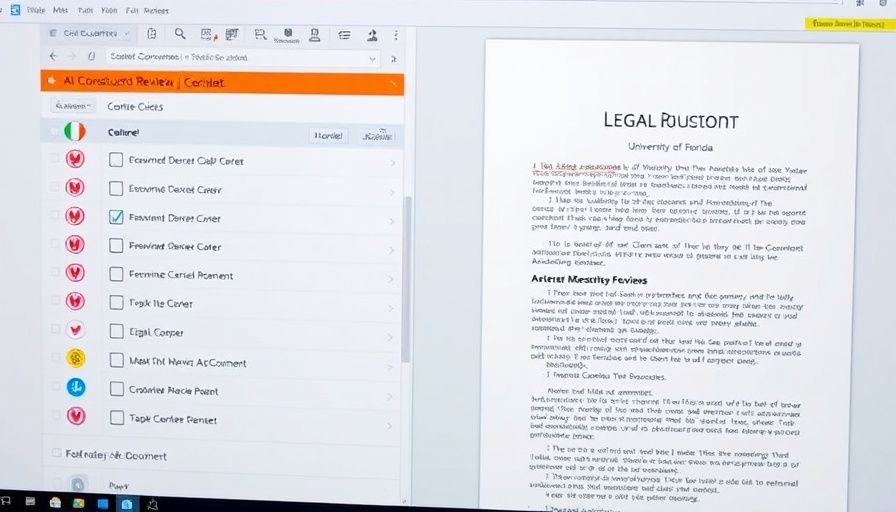
Revolutionizing Document Review in Construction
In a rapidly digitalizing world, the construction industry is embracing solutions that enhance efficiency and accuracy. The Boldt Company, a prominent construction firm, is leading the charge by implementing AI-driven document review tools, specifically through their partnership with Document Crunch. This move marks a significant shift in how contracts and project documents are managed, streamlining processes that have historically been time-consuming and tedious.
The Challenges of Traditional Document Review
For decades, the process of document review in construction projects has involved manual examination of contracts and specifications, often leading to errors and delays. These traditional methods not only slow down project timelines but also elevate the risk of costly mistakes. With a focus on delivering projects on time and within budget, construction firms are increasingly seeking ways to mitigate these issues. The integration of AI technology presents a solution that promises efficiency, reducing human error and improving overall operational workflows.
What is Document Crunch?
Document Crunch is an AI-based tool designed to analyze and review construction documents intelligently. By leveraging machine learning and natural language processing, it can identify discrepancies, assess compliance with regulations, and even suggest necessary changes in real-time. The software allows contractors and project managers to make more informed decisions faster, which is crucial in an industry where time is money.
Benefits of AI in Document Management
The shift to AI-based solutions like Document Crunch brings numerous advantages. Reduced Time and Increased Accuracy: One of the most notable benefits is the drastic reduction in time spent reviewing documents. Traditional methods may take days; AI can accomplish this in minutes. Additionally, the accuracy of AI tools surpasses that of an individual scrutinizing documents, resulting in fewer oversights.
Improving Collaboration: Another significant aspect of implementing AI is enhancing collaboration among team members. With immediate insights and analysis provided by Document Crunch, teams can align better on project goals and requirements. This transparency fosters a more cooperative environment, leading to greater overall project success.
Future Trends in AI for Construction
As technologies evolve, the construction industry can expect to see even more innovative uses of AI beyond document management. Predictive analytics could become commonplace, allowing companies to anticipate project challenges and address them proactively. Furthermore, AI-powered project management software could revolutionize how teams communicate and coordinate, minimizing delays and enhancing productivity.
Making the Transition
For contractors interested in integrating AI into their operations, understanding the steps necessary for a successful transition is vital. Start with education around AI technologies and their potential benefits. Following that, pilot programs can be created to assess these tools' effectiveness on smaller projects before a full-scale rollout. This strategic approach can minimize disruptions and optimize implementation.
Counterarguments to AI Adoption
Despite the advantages, some stakeholders remain hesitant about adopting AI technologies. Concerns about data security, the cost of implementation, and the fear of job losses due to automation are prevalent. Addressing these concerns requires open discussions and informative resources to highlight that AI is a tool meant to assist rather than replace human expertise in the construction industry.
Final Thoughts: The Path Forward
As Boldt Co. adopts Document Crunch, they pave the way for others in the industry to follow suit and harness the transformative power of technology. Those who embrace these advancements will likely find themselves at a competitive advantage, capable of delivering projects with higher efficiency and fewer errors. The construction world is changing, and the future lies in those who innovate for the better.
AI is not just a trend; it's a fundamental shift in how contractors manage their workflows. As the industry moves forward, it's essential for companies to be proactive in adopting these technologies to stay relevant and competitive.
 Add Row
Add Row  Add
Add 




Write A Comment